#spirit alignment
Explore tagged Tumblr posts
Text

One of the primary goals of The Fade Codex—at least to its creator—is to move beyond the rigid structure imposed by the Chantry and develop a flexible and nuanced classification system for spirits. Thus, the 'Spirit Alignment' classification system was created.
Spirit Alignment System:
Spirits are categorized based on their core ideals, emotions, or drives, rather than narrow, static definitions.
This approach provides a more adaptable and insightful exploration of their identities, behaviors, and transformations.
Spirit Evolution:
The Spirit Alignment system aims to address the evolution of spirits, showing how they grow from simpler forms into more complex, emotionally driven entities.
Example: Docktown's Spirit of Compassion evolving into Eulogy��from In Memoriam in DATV
Now that we understand the goals of The Fade Codex, let’s explore its classification system and see how Spirit Alignment offers a different perspective on these enigmatic entities we call spirits!
Why Classifying Spirits is Helpful
Classifying spirits into 'Spirit Alignment' categories such as learning-based, hope-based, and others provides a structured framework for understanding their nature, purpose, and behavior within both the Fade and Thedas. Spirits are complex entities shaped by emotion, thought, and intention, making them inherently difficult to define. By organizing them into these thematic groups, scholars, mages, and Fade researchers can:
Identify Motivations: Each category highlights the primary drive behind a spirit's actions, whether it's the pursuit of knowledge, the will to survive, or the need to instill hope.
Predict Behavior: Spirits within a category often share behavioral patterns, making it easier to anticipate how they might interact with mortals or other spirits.
Assess Risk and Corruption: Different spirit types have unique vulnerabilities to corruption, and classification helps identify the potential demonic forms they might take.
Guide Interactions: Mages and mortals who deal with spirits can tailor their approaches based on a spirit's category, improving the chances of peaceful or productive interaction.
Preserve Knowledge: Organizing spirits into defined groups helps pass down knowledge more effectively, preventing misunderstandings or misclassifications that could lead to dangerous consequences.
How Spirits are Classified
Spirits are categorized based on their core essence and purpose, which reflects the emotions, ideals, or drives they embody. Each classification represents a fundamental aspect of mortal existence, as spirits themselves are shaped by mortal emotions and thoughts.
These categories are not rigid but serve as a flexible guide, acknowledging that spirits often overlap across multiple classifications depending on the circumstances. For example:
A Spirit of Passion, which is classified in the Spirit Alignment system as a survival-based spirit, it might also overlap with other alignments depending on what fuels its 'passion.'

The Fluid Nature of Spirit Alignment: A Case Study of Spite
Spite as a Spirit of Passion:
In datamined notes from DATV, Spite was originally described as a Spirit of Passion before being later redefined as a Spirit of Determination.
Spite was drawn to Lucanis because of his unwavering will to live.
Over time, Spite evolved into a Spirit of Obsession.
Spirit Alignment Classification:
This connection led the creator of The Fade Codex to classify Spirits of Passion under survival-based spirits.
Fluid Alignment of Passion Spirits:
The alignment of a Spirit of Passion can vary depending on what fuels their passion.
They might align with chaos, love, or strength, depending on their purpose and connection to the mortal they are drawn to.

Case Study: The Evolution of a Spirit – From Compassion to Eulogy
Stage 1: Spirit of Compassion
Purpose: A Spirit of Compassion manifests in Dock Town during a series of demonic murders, offering comfort to the fallen.
Awareness: It senses a connection between the victims, but lacks the knowledge to fully understand it.
Stage 2: Transformation into Eulogy
Catalyst: The repeated loss and a growing awareness of manipulation behind the deaths drive the spirit to evolve into Eulogy.
Purpose: Eulogy vows to remember the dead and protect others from demonic threats, gaining a clearer sense of purpose and identity.
Stage 3: Eulogy’s Role in Dock Town
Action: Eulogy actively protects Dock Town’s residents and seeks to prevent further manipulation.
Analysis of Spirit Evolution
Emotional Catalyst: Exposure to suffering and injustice pushed the Spirit of Compassion to evolve.
Outcome: Eulogy combines its original compassion with a clear mission of protection and remembrance.
Significance: This evolution highlights how spirits can grow from simple embodiments of emotion into complex entities with distinct goals.
Eulogy serves as an example of spirit evolution shaped by emotional resonance and purpose, showing how a spirit can adapt to meet the needs of those it watches over.
#thefadecodex#dragon age#dragon age 2#dragon age inquisition#dragon age the veilguard#da#da2#dao#dai#datv#the fade#da spirits#Solas#because he is the Fade Daddy#introduction into spirits#spirit alignment#spirit classification#spirit of compassion#eulogy#veilguard
32 notes
·
View notes
Text
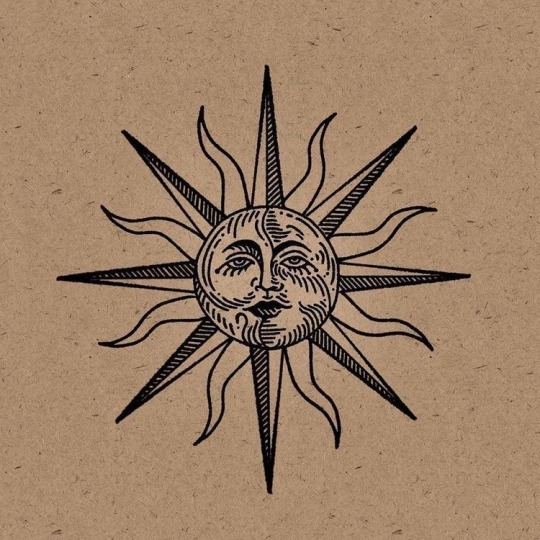
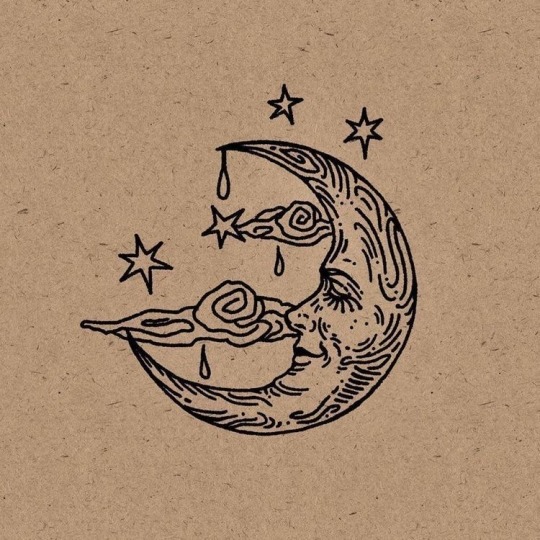
#sun#moon#aesthetic#planets#sky aesthetic#sun and moon#energy#nature aesthetic#sunrise#sunset#goodnight#healing#alignment#space#thoughts#spilled ink#spirit#humanity#naturecore#art
11K notes
·
View notes
Text

I guess this is a Thing™ now cuz I keep finding more of these in my files lol.
Prev
#its been so long i dont know if I u can fully explain my reasoning on some of these but i think i stand by most of them#not 100 percent sure about albw link or blue but i think the rest are pretty spot on#loz#legend of zelda#alignment chart#alignment meme#the legend of zelda#link#green#blue#vio#red#twilight princess#spirit tracks#wind waker#a link between worlds#a link to the past#breath of the wild#ocarina of time#majoras mask#skyward sword#four swords#minish cap#loz 1#adventure of link#og loz#nes loz#botw#oot#alttp
535 notes
·
View notes
Text
the party has just been (very poorly) conned into partitipating in an mlm
Goblin Rogue (speaks in 3rd person): "[rogue] did not sign up for this! [rogue] better get paid handsomly for this or he's going to find a way to get the payment himself!"
Warforge Paladan: "why do you need payment? is the good we will do not enough?"
Goblin Rogue: "[rogue] does not care about doing good, he is not a good person! [rogue] wants coin for his troubles!"
Warforge Paladan: "im sure you won't actually steal anything :)"
Goblin Rogue: "[paladan], look at [rogue], look at him- [ROGUE] IS A PIRATE!"
Warforge Paladan leans way down to be eye to eye with rogue, who is standing aggitated infront of them
Warforge Paladan, full confedence: "i don't know what a pirate is :)"
#shit my players say#rpg#submission#shareable#dnd#team spirit#stealing things for fun and profit#what's my alignment again#this is how you paladin
465 notes
·
View notes
Text




at the risk of veering entirely off-canon, i had to at least try to put on paper that concept of dealer being a retired grim reaper (out of potentially many)
since god is dead, i like to think that nothing works anymore, making him out of a job.
i think the game isn't too far off from the position as a death entity, if that makes sense. same shit, different tools, only the unfortunate souls come willingly
#buckshot roulette#dealer buckshot roulette#buckshot roulette fanart#the dealer#doodle post#doodle dump#this is to explain both him being effectively immortal; why your soul doesn't get 'taken' despite being presumably a demon#and how you end up in heaven at all should you perish: he sends you there himself#the reason why im Hesitant about whether this aligns w/ canon is like. i don't think a reaper counts as a demon??#but maybe it still works since like he's not a reaper Anymore and is just some Toothy Flesh Orb living in a repurposed factory building#also: the entire point of the robe is to basically conceal he's still just a head and hands without a real body. It Just Works#i joked it's non-newtonian air/spirit
207 notes
·
View notes
Text

new dbd meme just dropped
#dbd#dead by daylight#meme#lesbian spectrum alignment chart#the huntress#the plague#the artist#the twins#the skull merchant#the spirit#the legion#the unknown#the hag#the nurse#the good guy#the pig#mine
183 notes
·
View notes
Text
Your desires are not miles away. They are vibrations away. Alignment collapses time. Miracles happen in an instant.
—Abraham Hicks
#quotes#words#spirituality#law of attraction#manifestation#miracles#imaginination#alignment#law of assumption#manifesting#imagine#believe#know#abraham hicks#spirit#word
723 notes
·
View notes
Note
i need ur opinion on angel cdream
I’ve literally had this for weeks and this is still all I got…

#happy meme monday!#dsmp memes#to be fair though c!dream isn’t an angel he’s clearly god jesus and the holy spirit lol XD#hello there#(lol felt relevant after recent asks XD)#dreblr#c!dream#dsmp#doomsday trio#rivalsblr#c!rivals duo#dsmp meme#this gives me post prison vibes but it’d probably work for many peoples aus to be fair#spn memes#rivalsduo#so like literally all my brain can think of is Castiel… like one track mind which I know isn’t what you meant lol#but I will say I have read some people’s angel and demon dream and tommy analysis before and I don’t really agree with it#some saying Dream is an angle that then falls with Tommy as the demon who becomes good or just more Dream is demon and Tommy is angel#which y’all all know doesn’t really align with my opinions on the matter… I will say Dream as an angel is interesting though and I do like#to read fics where he has wings (because well usually lots of angst lol)…#anyways I’ll keep thinking about it to se did I come up with anything but enjoy this meme instead I guess <3 <3 :)
71 notes
·
View notes
Text
as overdone and rewritten and trashy as it can be i love the i-am-a-ghost-but-you-can-see-me trope and the often ensuing plot of figuring out how they died and why that person is so special that they can see them
#julie and the phantoms#school spirits#ghosts#lockwood and co#<- not really but it aligns with the genre#the umbrella academy#nancy drew#just like heaven
341 notes
·
View notes
Note
Hey there, spirit fam!! Do ya'll have a favorite type of unatural?? And what type of unatural do you hate most of all??


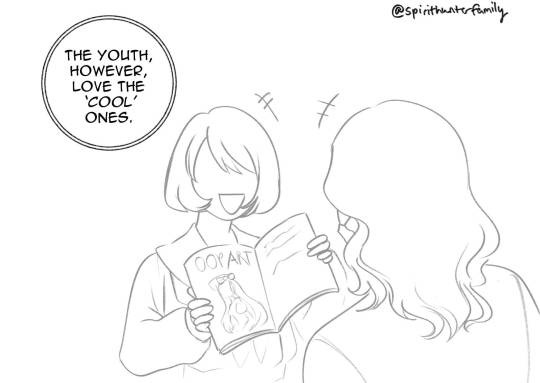

Well, it's certainly impressive for the younger ones to be this interested in spirits that way.
K*-fi
#spirit hunter death mark#death mark#spirit hunter series#asks#anon#kazuo yashiki#masamune kujou#madoka hiroo#satoru mashita#shuuji daimon#michiho kinukawa#christie arimura#towako yasuoka#SORRGY FOR BEING MIA I WAS BUSY W WORK AND ORDERING PRINTS ETC#comic#before anyone asks what about banshee#banshee is his own category#the “i'm sure if i light a makeshift incense the spirit will be besties w me” category#SORRY I HAD TO USE SLAY IDC IF IT'S NOT 90S ALIGNED SLANG BUT YOU KNOW. ITS FUNNIER
106 notes
·
View notes
Text

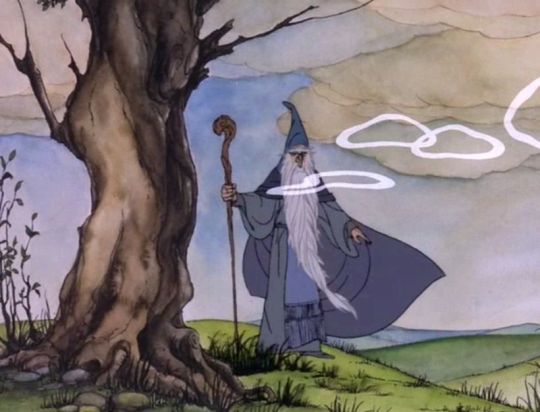

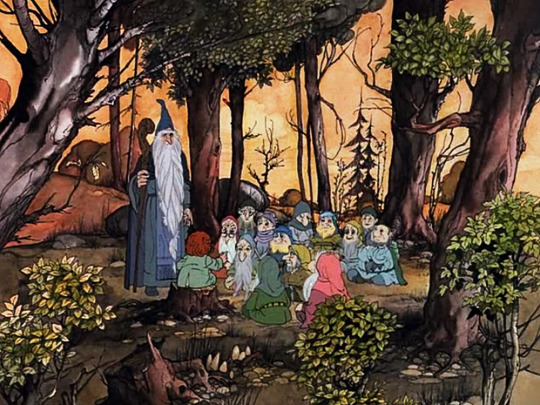
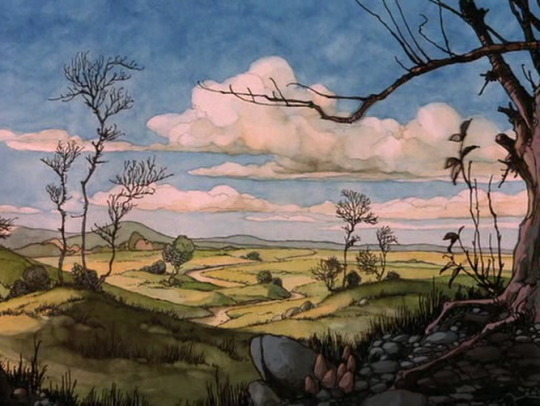

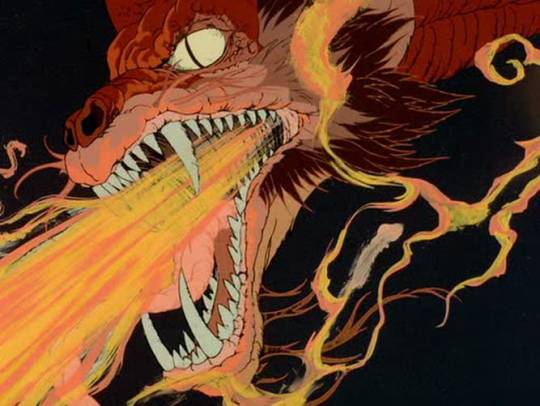
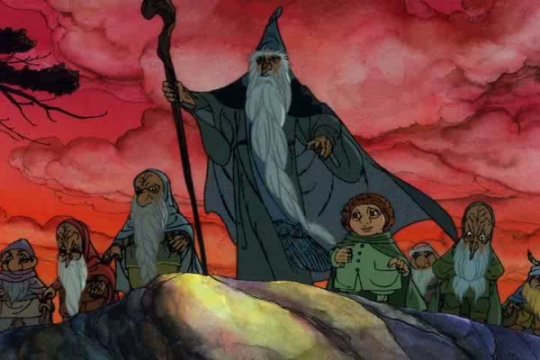

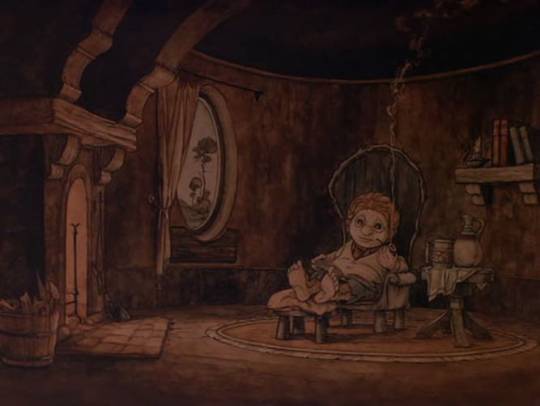
Despite its flaws, there has never been a more beautiful and faithful adaptation of Tolkien's work
#the hobbit#lotr#the hobbit 1977#rankin-bass#the sheer fact that they incorporated THE SONGS#the joy and relief of arriving at rivendell to a chorus of elfsong is unparalelled#and bearded elrond with a crown of stars is GOAT#i love the idea of him retaining a beard as half elven#....though in all honesty i think having become spiritually full elf his physiology wouldve followed suit#as the elven form is defined by a half spiritual body... his physiology would've had to have changed alongside his spirit#aragorn retained a strong spiritual form as well due to his elven blood... but as man did not have the full simulatenous conscious presence#and tolkien’s theology certainly wasnt dualist despite depiction of tangible spirituality... it was more ’multidimensional’ than individual#so i think elrond's material form must've aligned to elven biology as well to posess such a spiritual nature... meaning no beard :(#but we can dream cant we#at least we got the shipwright and the ancient un-fallen elves in the West probably have beards too#they'll give elrond one when he gets there
297 notes
·
View notes
Text
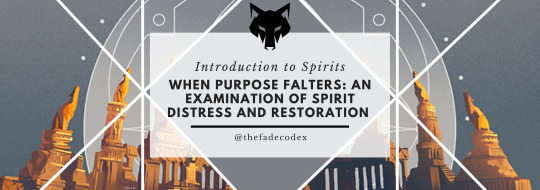
In DATV, our understanding of spirits deepens through two pivotal quests: In Memoriam and Spirits of the Dalish. These quests portray spirits as deeply empathetic entities shaped by emotions, capable of growth, distress, and healing.
The basic 'formula' can be used to figure out if a Spirit is going to become corrupted or return to the Fade: Purpose Disrupted → Emotional Distress → Catalyst Event → Mortal Intervention → Outcome (Corruption or Return).
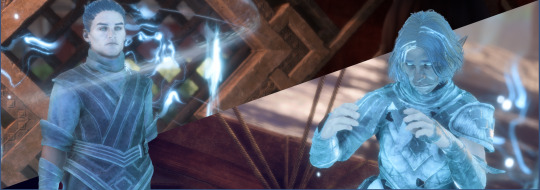
In In Memoriam:
A Spirit of Compassion transforms into Eulogy through an act of remembrance.
This transformation highlights that spirits can evolve when guided by mortal intention.
In Spirits of the Dalish:
An 'Anxious Spirit', burdened by grief over the deaths of the Dalish, risks corruption.
Bellara observes that spirits overwhelmed by negative emotions are at risk of turning into something darker.
Spite identifies the Anxious Spirit as a Spirit of Comfort.
For the Spirit of Comfort to return to the Fade, it requires action, including: 1. Gathering mementos and 2. Holding a vigil.
This concept is briefly explored in DAI, but the encounter is so fleeting that it didn’t leave a strong impression on the creator, even after multiple playthroughs. However, it seems likely that this quest was laying the groundwork for a deeper exploration of the idea in DATV
In Burdens of Command (DAI):
A Spirit of Command struggles with the physical world’s refusal to obey its directives, unlike the fluid responsiveness of the Fade.
The spirit expresses frustration at its inability to exert control in the physical realm.
The Inquisitor aids the spirit by slaying the Rage Demon.
After receiving assistance, the spirit returns to the Fade with ease.
So, what does this tell us? Spirits are not static entities—they are deeply influenced by mortal intention, emotional states, and symbolic acts. Their stability hinges on fulfilling their purpose or finding resolution, without which they risk corruption or transformation.
1. Spirits Have a 'Threshold' for Emotional Distress
Implication: Spirits can endure negative emotions or experiences for only a limited time before risking corruption or transformation.
Significance: This suggests spirits have an internal tether to their purpose. When that tether is strained or broken, their identity unravels, leaving them vulnerable to corruption or transformation into darker forms (e.g., Comfort becoming Fear or Despair).
2. Spirits Require Resolution Through Action
Implication: The Anxious Spirit needed an act of closure (the vigil) to find peace, showing that spirits cannot simply "will" themselves back to their purpose—they require external, symbolic actions aligned with their nature.
Significance: Spirits rely on harmony between their emotional state and purpose, often needing external intervention to restore balance. This suggests they are not entirely self-sufficient and may depend on mortals or other spirits for stability.
3. Spirits Are Deeply Affected by Mortal Emotions and Experiences
Implication: The Anxious Spirit's distress stemmed from the violent, unresolved deaths of the Dalish, showing that spirits are deeply empathetic and can become trapped in emotional feedback loops tied to mortal events.
Significance: Spirits' emotional states are reactive and tethered to their surroundings, suggesting they can "absorb" ambient emotional energy, especially when it clashes with their purpose.
4. Corruption May Not Be Instantaneous, But a Process
Implication: Spirits do not immediately become corrupted when they encounter negative emotions. There is a window of opportunity to intervene, as seen with the Anxious Spirit.
Significance: This challenges the assumption that spirits are instantly corrupted by negative emotions.*
*Note: This is not including events where a spirit is bound against it's will and forced against it's purpose.
5. Action is Needed for Spirits
Implication: The vigil was not just a symbolic act for the Anxious Spirit—it was an anchor, grounding the spirit back to its original purpose.
Significance: Spirits often need ritual or symbolic acts to realign with their purpose after prolonged distress, highlighting their intrinsic connection to intention, symbolism, and the constructs of the Fade..
6. Time Is a Factor in Spirit Corruption
Implication: The longer a spirit exists in emotional distress, the closer they come to losing their purpose and becoming corrupted.
Significance: There seems to be an unspoken "time limit" during which intervention must occur. This "time limit" may different depending on the spirit as well--a more "simple" spirit, such as a Spirit of Comfort may have less time for an intervention vs a more "complex" spirit, such as a Spirit of Compassion.
#thefadecodex#dragon age#dragon age 2#dragon age inquisition#dragon age the veilguard#da#da2#dao#dai#datv#the fade#da spirits#Solas#the fade daddy#introduction into spirits#spirit alignment#spirit classification#spirit of compassion#eulogy#veilguard#dragon age lore#thedas#dragon age solas#chantry#dav#dragon age veilguard#spirit corruption
33 notes
·
View notes
Text

#christian faith#mountains#photooftheday#inspiration#god loves you#gratitude#alignment#bringthekingdom#landscape#nature#holy spirit#lord jesus christ#faith#believe#gospel#purpose#for you#prayer#praise him#blessings#meditation#god is awesome#saved#redeemed#digital art#photography#love#creator#trust god#acceptance
28 notes
·
View notes
Text
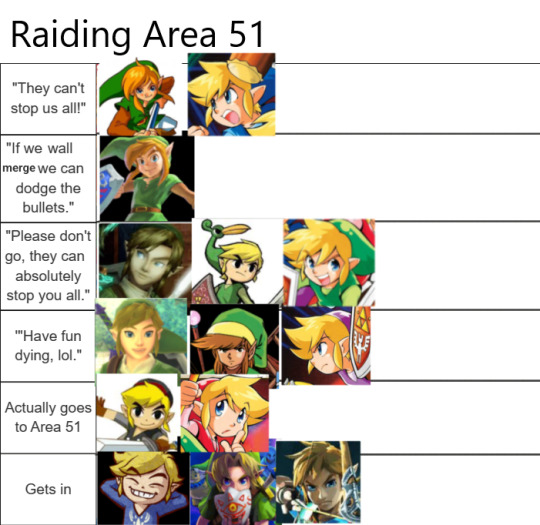
Found this in my files lol. Sort of a sequel to this, now including the four swords links and botw
#loz#legend of zelda#link#meme#alignment chart#alignment chart meme#four swords#red#green#vio#blue#Oracle games#alttp#minish cap#wind waker#majoras mask#oot#skyward sword#loz 1#adventure of link#albw#a link between worlds#ocarina of time#spirit tracks#botw#breath of the wild#funny#the legend of zelda#twilight princess#oracle of seasons
477 notes
·
View notes
Text
Don't feed the wildlife
The party has just managed to pacify half the undead stewards of the library with the fresh corpses of recently defeated enemies, while the other half launched themselves at us in FOMO-induced hunger and (unfortunately) had to be killed.
The dhampir currently hopped up on undead roids, constantly trying to bite people: Okay, now let’s go kill the rest of them.
The guy who used to be a monster caretaker: What? Why? They haven’t done anything to us! The others were just hungry, we can’t blame—
Dhampir: They eat people!
The automaton who has no skin in the game on account of having no concept of hunger or flesh to be eaten: …that we have just fed them.
Monster Caretaker and Automaton both give Dhampir a ‘I Know What You Are’ (and that’s a hypocrite) kind of look but are too polite to introduce pot to kettle.
Monster Caretaker, still trying to be diplomatic: Look…all living, and unliving, things need to sustain themselves, so it’s okay to eat people—
The dragonkin, seemingly the only person in the party with a functional moral compass: No. It really, really isn’t.
A pause as everyone looks at Dragonkin with various levels of guiltiness
Dragonkin: …but Caretaker is right; we should not be going around picking fights if we can avoid it. So, you stop going around trying to kill everything we meet and you stop sneaking corpses into the bag of holding for future monster snacks.
A dejected 'Awwww man…’ rings out among the assembled.
#shit my players say#rpg#submission#shareable#pathfinder#unconventional food choices#team spirit#what's my alignment again
403 notes
·
View notes
Text

Day 14: Haunt
#art#my art#artists on tumblr#jorm scribs#original character#oc#inktober#nisse#house spirit#oc: theo#silly creature#I need to design him a proper creature form; one that aligns more with his mythological roots#you see him climbing up your shelves; knocking off your pictures wdyd#just kidding Theo would never break anything unless really angered. Like if you didn't take off your shoes before entering.#Or letting mold grow in your bedroom. As long as you treat the house well he's not a problem and will even help with chores#If you leave out porridge for him you'll find a hot drink by your elbow whenever you need one
32 notes
·
View notes